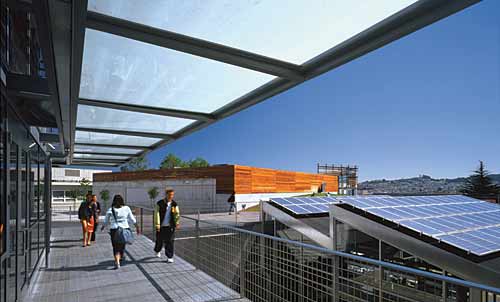Sunpower for School Kids
The Bottom Line
The bottom line on PV in schools is that where jurisdictions support demonstration programs, putting it in is a no-brainer. The installation won't meet much of the school's electrical load, but it will be a great-and inspirational-teaching tool. In jurisdictions that provide some form of subsidy for larger installations-those intended to significantly reduce energy use in the school-it will depend on the economics of the situation: the level and type of support provided, the amount of investment (if any) that the school is expected to provide, any regulatory restrictions that may apply, etc. In some areas, substantial PV arrays make a great deal of sense: The program in New Jersey, for example, is currently oversubscribed with a substantial waiting list. In others, even when the incentives are reasonably high, the installation may simply not "pencil out." In areas without any subsidy, the argument for PV is much harder to make. To the extent possible, a school should try to incorporate a demonstration scale array (2 KW or so) as a teaching tool, but from what school officials across the country seem to be saying, even this is an expensive "extra" to add to a school budget-for either modernization or new construction.
|
||||
The best advice? If at all possible, go for it, at least at the demonstration scale. If some form of rebate, incentive, or financing is available, install the largest array you can afford-it will continue to provide energy and education benefits for a long time to come. In any case, don't think of PV as a substitute for good, basic, energy-efficient design and construction. Energy conservation should always precede on-site, renewable energy production.










